Our Expertise
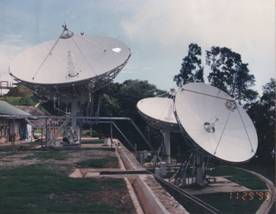 Zeta Resources' areas of expertise and technology know-how extend across the range of systems, technologies, projects and applications that form the foundation of satellite and broadband communications, and IT networks and applications. While there are a number of special areas of dedicated ability, we nevertheless strive to address every problem and need on a holistic basis. Zeta Resources' areas of expertise and technology know-how extend across the range of systems, technologies, projects and applications that form the foundation of satellite and broadband communications, and IT networks and applications. While there are a number of special areas of dedicated ability, we nevertheless strive to address every problem and need on a holistic basis.
In addition to the depth of technical ability, we have assisted clients in areas such as program management, operations planning, technology and market due diligence, outsourcing management and market development. We have fundamental knowledge of the technologies involved and are able to review, identify and promote their effective application to requirements in the private and public sectors.
System Approach
We recommend and follow a systems approach to defining needs and converting them into viable and financially-attractive applications. Assuming that one starts from a position of zero, the challenge of creating and applying telecommunications and IT is a matter of figuring out:
- What is needed - content, data, or IT applications?
- Where is it needed - domestic, regional or international?
- What are the technology options - ground and space based?
- What is the appropriate architecture and design?
- How should the network be implemented and how should it be managed?
Added to this are other related questions, such as:
- What standards are available - user interface or internal to network?
- What steps are desirable to assure a reliable network or application?
- What’s the budget - capital and operating?
- Who will do the work - internal or external resources?
- How should the contract and supporting documentation be structured?
- How much should be outsourced and who can do it?
- How much excess capacity should be available for the future?
- How will the network be managed - is the organization ready now?
- What risks are involved in the technology or operation plan?
- What is the appropriate level of security?
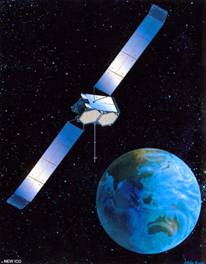
Satellite Communications –
Systems, Applications and Program Management
The areas of our attention and expertise extend throughout the satellite network, comprised of the Space Segment and the Ground Segment.
Space Segment
The Space Segment consists of one or more communications satellites; while geostationary earth orbit (GEO) is by far the most successful in business and application, the medium earth orbit (MEO) and low earth orbit (LEO) configurations have been pursued.
Benefits of Mobile Satellite Communications.
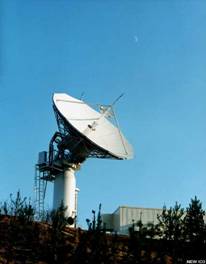 The GEO Mobile satellite at your left supports hand-held phones and its repeater contains a digital on-board processor. Some applications will benefit from this technology, while others will work adequately using the much simpler bent-pipe repeater. Applications rely on a space segment of high performance and dependability, which are complicated by its remoteness from the ground. Broadband mobile terminals now provide improved access to the Internet for the full range of applications including videoconferencing. The GEO Mobile satellite at your left supports hand-held phones and its repeater contains a digital on-board processor. Some applications will benefit from this technology, while others will work adequately using the much simpler bent-pipe repeater. Applications rely on a space segment of high performance and dependability, which are complicated by its remoteness from the ground. Broadband mobile terminals now provide improved access to the Internet for the full range of applications including videoconferencing.
Any communications satellite is composed of a communication payload (repeater and antenna system) and its supporting spacecraft bus (solar array and batteries, attitude and orbit control system, structure and thermal control system), and is placed in orbit by a launch vehicle. The Space Segment also includes the tracking, telemetry and command (TT&C) station or stations, and a satellite control center. We may refer to the business of the satellite operator as the Space Game. To be successful in the Space Game, you need the right orbit slots or constellation, and satellites that deliver effective power and bandwidth to desirable regions and markets (those with growing demand for space segment services).
Satellite System Program Management.
With over thirty years of experience in communications satellite program management, engineering and operations, we are in a unique position to assist buyers of satellites and satellite capacity. We know both sides of this equation (e.g., the buyer of the satellite and transponder and the seller of bandwidth) from having lived it ourselves; and we can therefore guide the program or business in the following areas:
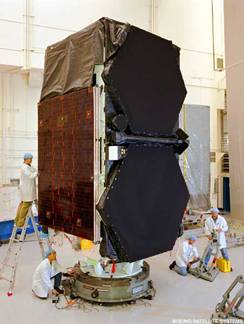
- Service requirements developed from user needs
- A realistic assessment of the market and technologies to support the system
- An architecture for the space segment, considering the capabilities of modern satellite systems and user terminals
- Communications payload requirements definition and detailed specification
- Overall satellite definition and technical specification (system and subsystem)
- Procurement and implementation management
- Negotiation of specifications, statement of work, and contractual terms and conditions
- Satellite capacity identification, planning and acquisition
- Satellite system design and management
- RF link analysis, transponder utilization, and throughput optimization
- Technology assessment and insertion
- Due diligence of a particular technology and acquisition target
- International frequency coordination and spectrum management
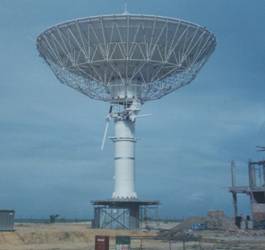 The overall design of the payload or an end-to-end system is a complex task, involving all of the areas cited above and several others of a highly technical nature. Since most services are digital in nature, proper design must consider the primary contributors to the performance of the service. The link budget process provides the most basic understanding of the earth station-to-satellite path. However, the distortion characteristics of non-linear amplifiers (TWTA, SSPA and klystron) impact different signal types in different ways. Further complicating the study is the interaction of these properties on the ground and in space. The link budgeting process may have to be supplemented by computer simulation and hardware measurement in the laboratory or with a real satellite. The overall design of the payload or an end-to-end system is a complex task, involving all of the areas cited above and several others of a highly technical nature. Since most services are digital in nature, proper design must consider the primary contributors to the performance of the service. The link budget process provides the most basic understanding of the earth station-to-satellite path. However, the distortion characteristics of non-linear amplifiers (TWTA, SSPA and klystron) impact different signal types in different ways. Further complicating the study is the interaction of these properties on the ground and in space. The link budgeting process may have to be supplemented by computer simulation and hardware measurement in the laboratory or with a real satellite.
Ground Segment
The Ground Game, which is the domain of the earth station operator or network service provider, is potentially more complex because success requires that many factors be addressed correctly (or at least better than your competitor or opponent).
The Ground Segment in the first figure contains many user terminals - illustrated by very small aperture terminals (VSATs) - and a single hub earth station that ties the network together in the form of a star. Likewise, this architecture may be used to deliver digital content such as television programs, audio services, web pages, and innovative forms of multi-media. Networks of this type should be designed as a consistent whole, based on the application requirements and existing and evolving standards for compression and efficient data transfer. Also to be considered are the satellites available vs. those to be developed to provide space segment service.
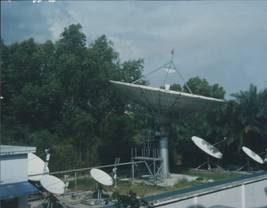 The alternative to the star VSAT network is to use a mesh architecture that allows direct communication between remote earth stations without passing through a hub. Depending on the design of the space segment and air interface, other types of user terminals that could be employed include: lap-top and hand-held satellite telephones, broadband data modems for PCs, TV receivers, and video teleconferencing terminals. The alternative to the star VSAT network is to use a mesh architecture that allows direct communication between remote earth stations without passing through a hub. Depending on the design of the space segment and air interface, other types of user terminals that could be employed include: lap-top and hand-held satellite telephones, broadband data modems for PCs, TV receivers, and video teleconferencing terminals.
Equipment for the ground segment is supplied by a variety of manufacturers and integrators, including specialists in satellite communications and, in some cases, more familiar communications and consumer electronics firms in the global marketplace. Selecting among these sources is perhaps the largest single challenge.
Important factors for the Ground Game include:
- Understanding the market and what customers want to achieve in their business
- Offering a package of services that solve communications problems or deliver content to a hungry marketplace.
- Having a solid technical platform that extends services to users on a straightforward and economical basis.
- Delivering user equipment and service through effective channels of distribution and fulfillment.
- Implementing appropriate operation and administrative systems, including customer care, accounting and billing.
- Timely entry in domestic and international markets, taking account of regulatory, business and cultural barriers.
We are able to help define the ground segment architecture, organization structure, and management systems to address the Ground Game. This is an every-changing landscape of technology (hardware and software) and management methodology. Currently, the most popular satellite network technology is the VSAT, now reduced to a commercial and consumer product.
Whether using video networks, VSATs or major gateways, the key to success is always to set the requirements early on, update those requirements as more is learned, and employ the right implementation methodology along a path of quick adaptation to evolving requirements, users and markets.
Information Technology and Collaboration
Engineers and business professionals were early adopters of information technology. However, many organizations have been slow to exploit IT networks to improve the performance of teams and groups who must collaborate at a distance. Historically, IT has been managed by the business side of the house, sometimes to the detriment of the technical functions and activities. Through better communication of requirements, technical managers and staff can get the IT resources they need.
At Zeta Resources, we understand the challenges in working at a distance and we have helped organizations evaluate and adopt a variety of solutions which employ systems that are familiar (PCs, local area networks, Internet web servers and wireless communications) and those that have not reached any degree of mass appeal (synchronous meeting tools, document management systems, Internet-based video conferencing, and centralized project management).
Outsourcing and the Make-versus-Buy Decision.
The process of creating an effective telecommunications and IT network begins with understanding who the players are (internal and external), where they are located, and what forms of information they must access and share. For this to be implemented properly, an architecture should be developed that builds upon what is in place already as well as what may need to be introduced. Moving effectively in this direction is neither easy nor without risk. We have helped organizations understand their needs and requirements in ways that they may be addressed by state-of-art IT systems and networks.
Taking it to the next level would involve a thorough evaluation of alternatives, including the trade between internalizing the function (the "make" strategy) versus working with professional outsourcing suppliers (the "buy" decision, also known as outsourcing). An outsourcing strategy will consider how the requirements are divided among network systems and services, who are the most appropriate outsourcing organizations to be evaluated, and the manner in which the whole arrangement is to carried forward and managed on a day to day basis.
IT Networks and Application Systems.
Modern data processing systems are simple on the surface because of our reliance on standard servers, PCs, local and wide area networks. The role of the Internet suite of protocols (e.g., TCP/IP), Gigabit Ethernet, fiber optic networks and satellite systems has greatly reduced the barriers imposed by location and distance. However, the real complexity comes in when organizations need to introduce new enterprise applications that ride on top of this type of architecture.
The concept behind architecture like that shown is deceivingly simple: decide on the business and technical functions you need, and then cobble the systems together from best-in-breed components. In reality, this is a difficult and risky business. In almost every case we have observed, the first vision did not survive to the final system; rather, it is the people behind the effort who provide the magical glue to make it come together.

Zeta Resources has assisted clients in organizing their current and evolving IT requirements so that the overall network can be assessed. This involves network and application testing, request for information (RFI) and request for proposal (RFP) preparation and evaluation, culminating in test and verification of the operational system.
Our Services
Zeta Resources offers consulting services to organizations in industry and government that seek to apply satellite VSAT, video and IT network technology to communications and information needs.
The services offered address issues in the technical, operational and business domains. We are particularly expert in assessing new technology and identifying how it may be inserted into systems that must achieve important objectives. The particular application areas of our focus include:
- Satellite technology - space and ground segments
- Broadband and wireless communications
- Project development services for VSAT IT networks and collaboration
Our people and resources have contributed strongly to the success of established networks and startup ventures in these areas, including the following examples:
- Design of national and regional satellite networks to deliver entertainment television and audio services employing the MPEG 2 and DVB-S standards
- Preliminary and detailed design of a global satellite communications network; selection of appropriate satellite capacity; definition of the ground segment; selection of user terminals; review and improvement of technical and management operations
- Assessing and valuing new satellite and broadband communications technologies, such as Internet Protocol adaptation for wide area networking and use of frequencies above 10 GHz for broadband access and backbone services
- Due diligence of a hardware manufacturer in the satellite microwave field
- Evaluation of market entry strategy for a major user of fiber optic transmission in the television industry
- Design of microwave transmission systems for a network to deliver digital video and data programming to commercial aircraft traveling over oceans and land.
- Development of the GEO mobile satellite capability for hand-held user terminals; identification and organization of the joint venture to take the project forward
- Recommendations for a make versus buy decision on the provision of broadcast center and VSAT hub facilities
- Evaluation and development of markets for an innovative Internet backbone architecture that uses geostationary satellites and undersea fiber optic cables.
- Due diligence of an innovative wireless network for in-home connectivity at greatly reduced cost as compared to current alternatives
- Orchestration of successful international spectrum and orbit coordination through the FCC and ITU processes
- Presentation of market opportunities and challenges for companies that supply equipment to the satellite communications industry
- Resolution of technical issues relating to the performance of satellite networks, due to improper design, manufacture, installation, operation and external sources of radio-frequency interference
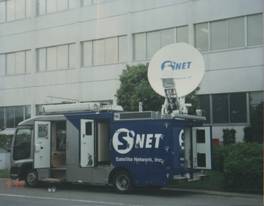 The fact that our experience covers both ground-based and space-based telecommunications technologies means that we are in the best position to understand how to trade-off and/or blend these ingredients. The age of the pure play is probably over; organizations need to consider all alternatives, particularly when the markets and operations must extend outside of national borders. The fact that our experience covers both ground-based and space-based telecommunications technologies means that we are in the best position to understand how to trade-off and/or blend these ingredients. The age of the pure play is probably over; organizations need to consider all alternatives, particularly when the markets and operations must extend outside of national borders.
Any technology-based business must rest on a proper foundation of people and the programs and projects they conduct. These are likewise areas where Zeta Resources has extensive experience. Using telecommunications and IT resources, modern organizations improve their performance and business focus. We help organizations and individuals meet the difficult demands of application identification and introduction through a variety of channels and media, including consulting, education, training, and project development.
Examples of Areas of Consulting Expertise
Technical and Management Consulting in Satellite Communications to the following clients:
- Organizations that employ satellite communications - assistance with requirements assessment, microwave link design and verification of new earth stations and user terminals; evaluating equipment and services in video and data domains; audits of operations and performance; satellite selection and network rollout tactics.
- Members of the financial and insurance communities - review and assessment of planned or operating technology in space and on the ground; evaluation of new businesses and M&A opportunities
- Satellite operators - definition of satellite requirements, technical specification development, support of the procurement process, technical and business monitoring of satellite construction, assistance with new application development and introduction, and staff selection.
- Spacecraft manufacturers - evaluating advanced technology for consideration of its insertion into current and new products; guidance in the development of new products and applications; identification of market opportunities, assistance to current customers with our services to satellite operators.
- Equipment manufacturers - product identification and roll-out strategy, assistance with new market development (including emerging markets), support for strategic alliance development and mergers/acquisitions.
-
Regulatory, frequency coordination and host-nation agreement strategy and support.
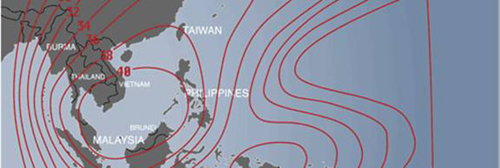
Strategic and technical consulting to broadband and wireless developers and service providers:
- Technology evaluation, validation and insertion into new and evolving products and services.
- Promotion of strategic alliances and other collaborative arrangements between technology developers and industrial or governmental consumers
- RF requirements, link characterization, and design integration.
- Product introduction plan review and verification
- Assistance with service design.
- Support of market entry and regulatory strategy.
- Development of product support materials, including marketing presentations and proposals.
Project and business consulting to major users of IT systems and services, particularly as related to the distributed environment, using conventional WAN solutions as well as satellite/VSAT network technology:
- Business requirements definition for the network and strategic applications.
- Identification of high-leverage and high-risk technologies - hardware, software, wide-area network and appropriate use of satellite communications/VSATs
- Developing the architecture for information access and delivery over network to domestic and international locations
- Performing honest and thorough "make versus buy" analyses and creating the best outsourcing approach with acceptable risk
- Development of procurement documentation, support of negotiations, and development of an appropriate Service Level Agreement for each component
- Organizing for a virtual project - groupware, collaboration and teleconferencing
- Taking stock of current technology and operation, and resolving an appropriate virtual team management strategy
- Development of technology strategy for Concurrent Engineering and the virtual engineering office.
Education and Training
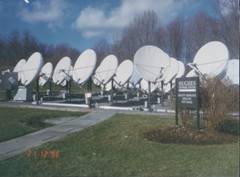 Zeta Resources provides an array of educational services and training within our areas of expertise. Our courses can be tailored to the particular needs of an organization and provided on a customized and confidential basis, if desired. Zeta Resources provides an array of educational services and training within our areas of expertise. Our courses can be tailored to the particular needs of an organization and provided on a customized and confidential basis, if desired.
We have been involved with technical training in satellite communications, telecommunications and wireless for over 30 years. The specific related fields covered in our education and training programs include:
- Satellite communications networks - broadband and mobile
- Spacecraft communications payload and systems
- Ground segments, earth stations and user terminals
- Telecommunications systems (wired and wireless)
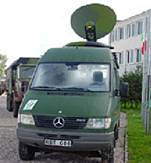
- IT and Data Communications (local area and wide area networks)
- E-business and the Internet
- Network Management (centralized and distributed)
- Engineering collaboration and virtual project management using new software and network tools and technology
Through an appropriate blending of technical concepts with vital issues in management, operations and business, our training has helped professionals contribute to their own career development and the advancement of their respective enterprises and departments.
|